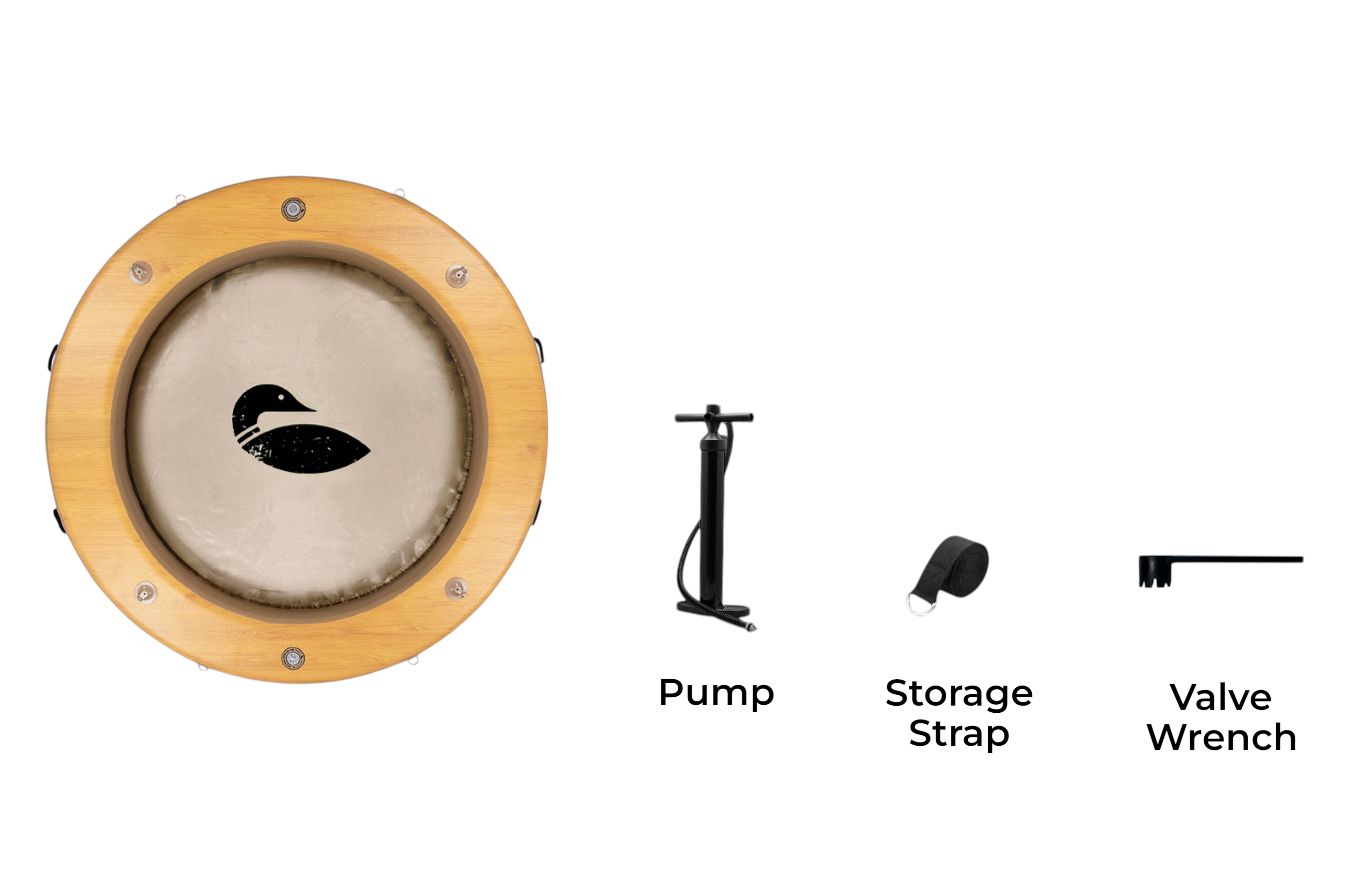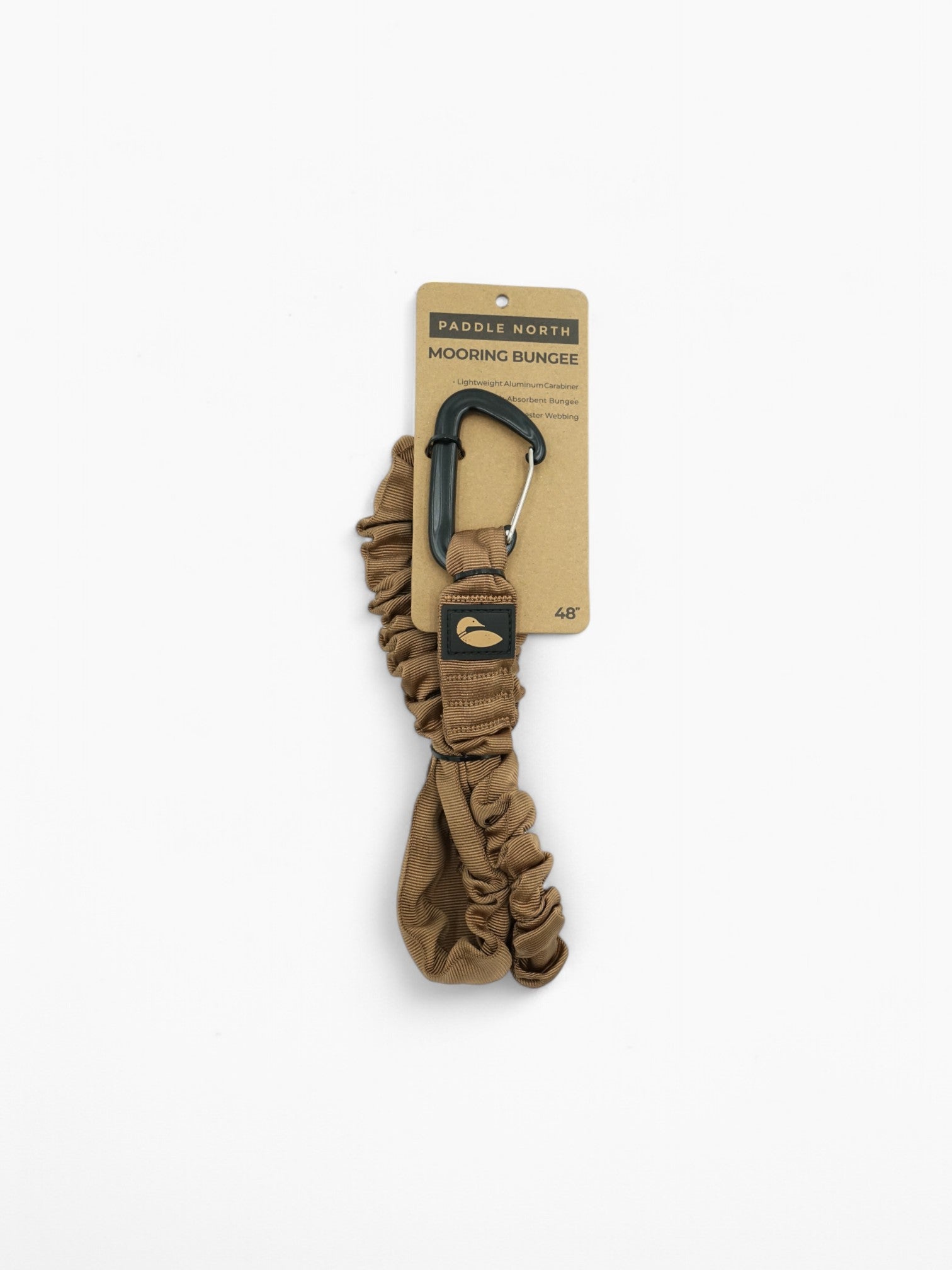
What's Inside?
Your kit should include your Loons Nest (5', 8', or 10'), Manual Pump, Storage Strap, and a Valve Wrench.
Getting Started
Getting Started
Read all safety instructions and guidelines found below. Commit to always wearing a life jacket and make safety a priority on the water.
Safety Instructions - Please Read
Please read carefully prior to use.
Failure to follow safety instructions and precautions may result in serious personal injury or death.
The warnings, cautions, and instructions discussed in this manual cannot cover all possible conditions or situations that could occur.
It is up to the operator to use common sense while using this product.
Do not allow persons to operate or assemble the Loons Nest until they have read this manual and have a thorough understanding of how it works.
This product is not a life saving device. A Type III personal flotation device (PFD) is required at all times while on board.
Do not use the Loons Nest under the influence of drugs or alcohol.
Do not use this the Loons Nest if you cannot swim.
Do not use the Loons Nest in rough waters, in storm-like conditions, or when lightning is present.
Use caution when getting on and off the Loons Nest.
Consult your physician before using the Loons Nest.
Use this product only if you know you are in good physical health.
Users of this product are responsible for their own safety.
Do not over inflate. Only inflate within recommended PSI range.
Inspect the Loons Nest for any worn or defective parts prior to use and replace as necessary.
Do not use if product is defective.
Do not use the Loons Nest near motorized boats.
While in use, ensure the Loons Nest is in deep enough water, free from hazardous materials.
Always carry the Loons Nest to the water, do not drag it across the ground.
If under 18, always use the Loons Nest under adult supervision.
Users of the Loons Nest assume all risk and liability.
Inflating Your Loons Nest
1. Take the black valve wrench from the repair kit and ensure the air fill valve and the pressure relief valve are tight. Typically, once a year you may need to retighten these valves with the wrench. Warning: Do not ever completely unscrew the valve.
2. Inflating the Loons Nest: Inflating the Loons Nest will take 5-8 minutes, although this does depend on the target psi.
3.1 Ensure the valve pin is in the up position. When the valve pin is up, you can still pump air into the Loons Nest, but it won’t lose any pressure when the pump hose is disconnected.
3.2 Connect the pump hose and inflate the Loons Nest to 6-10 psi, depending on how rigid you'd like it to be. The pump has a PSI gauge and will being to register pressure when the Loons Nest reaches ~3-5 PSI. The Loons Nest has a max air capacity of 10 PSI. The pressure regulator will activate and slowly let air out if max capacity is ever reached.
3.3. Electric pumps and air compressors can also be used. We have adapters and e-pumps if inflating manually is an obstacle. If you have an existing e-pump, feel free to use it. You won’t void any warranty or do any damage to the dock by using an off-brand pump.
Anchoring
Anchoring or tethering the Loons Nest can be done by tethering with a mooring bungee or a stretchy rope to an anchor, boat, dock, or other Paddle North product. It is recommended to anchor from multiple D-rings to ensure wind can’t get under the Loons Nest. 15 - 20 lb anchor is typically heavy enough for most bodies of water.
Deflating Your Loons Nest
1. Deflating the Loons Nest takes just a few minutes. Dry off the Loons Nest before rolling up and putting away for storage.
2. Open the valve cap and press down on the center pin for the air valve. The pin will lock in the down position and let all of the air out. Let it sit for a few minutes while air flows out of the Loons Nest.
Optional: Our electric pump and manual pump can vacuum the air out by switching the hose connector to deflate on pump.
Storing Your Loons Nest
Storing the Loons Nest inflated or deflated is acceptable. If storing deflated, ensure that the Loons Nest is completely dry. If storing in a below freezing temperature, it is better to have the Loons Nest unrolled where the seams won’t be stressed.

















